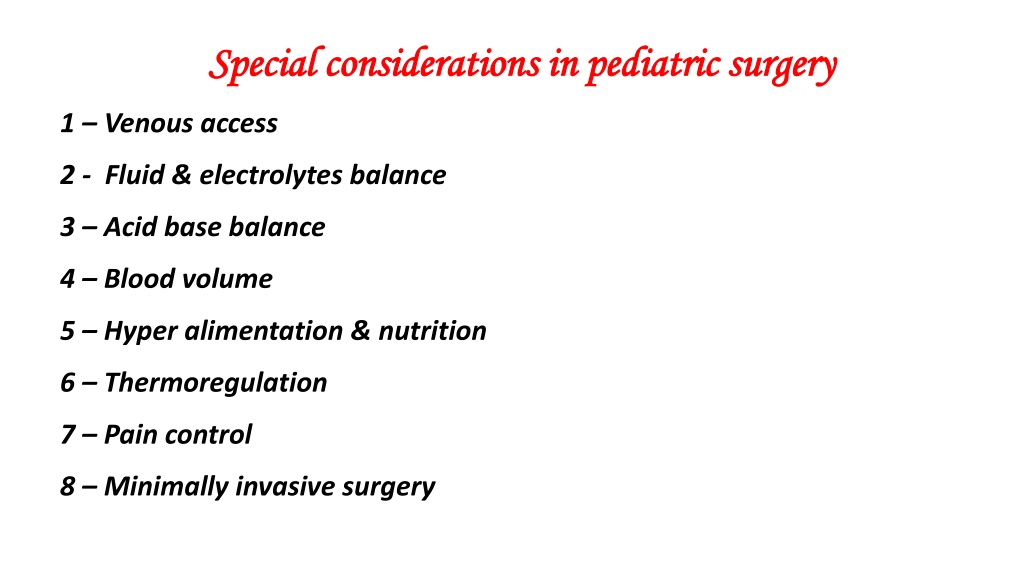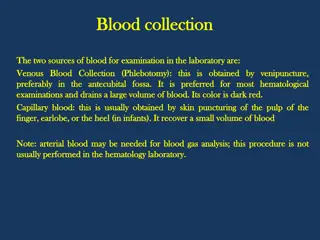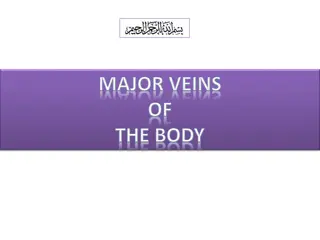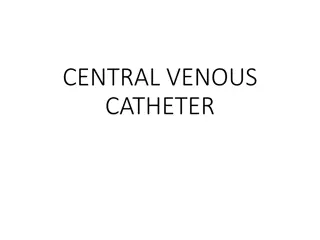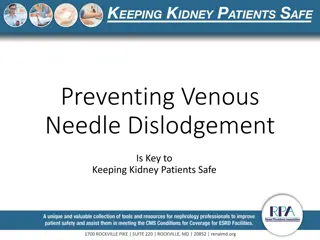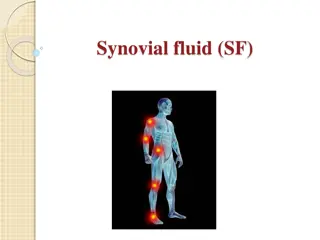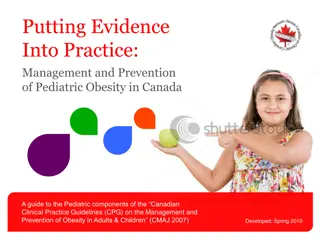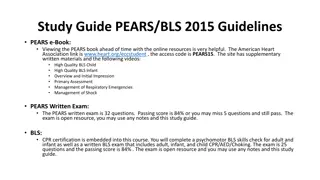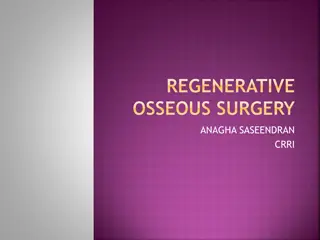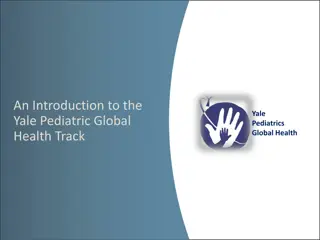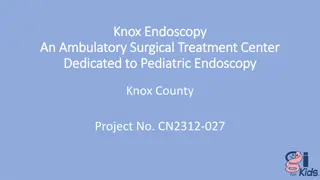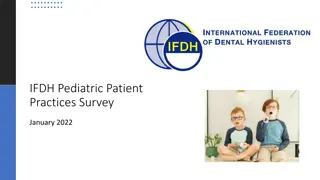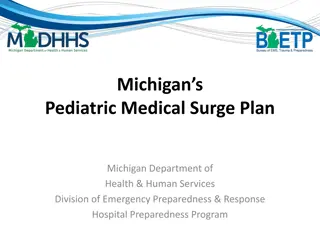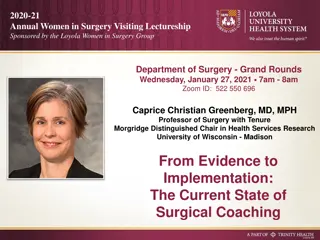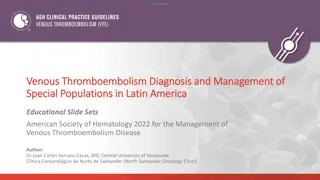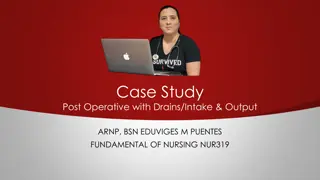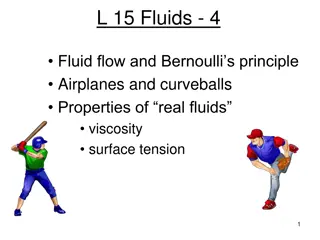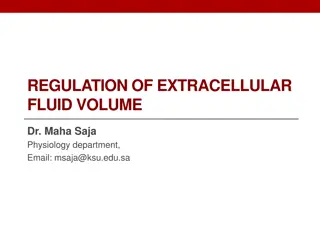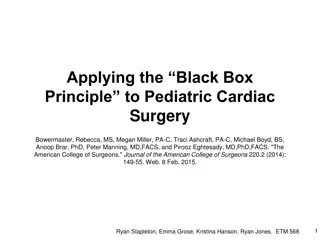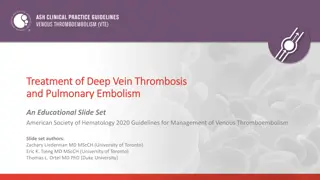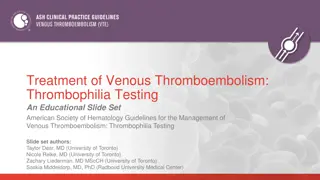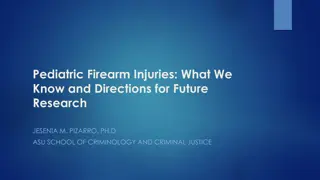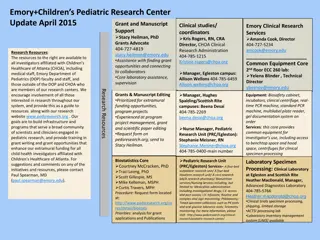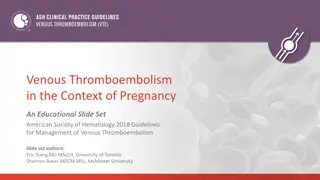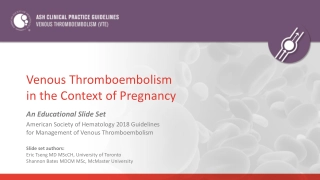Pediatric Surgery: Special Considerations for Venous Access and Fluid Management
Pediatric surgery requires special attention to venous access and fluid management due to unique considerations in infants and children. Key aspects include methods for obtaining vascular access, monitoring fluid and electrolyte balance, and addressing specific fluid requirements based on age and weight categories. These crucial factors ensure safe and effective surgical procedures in pediatric patients.
Download Presentation

Please find below an Image/Link to download the presentation.
The content on the website is provided AS IS for your information and personal use only. It may not be sold, licensed, or shared on other websites without obtaining consent from the author. Download presentation by click this link. If you encounter any issues during the download, it is possible that the publisher has removed the file from their server.
E N D
Presentation Transcript
Special considerations in pediatric surgery Special considerations in pediatric surgery 1 Venous access 2 - Fluid & electrolytes balance 3 Acid base balance 4 Blood volume 5 Hyper alimentation & nutrition 6 Thermoregulation 7 Pain control 8 Minimally invasive surgery
Venous access:- Obtaining vascular access in infant or child is a major responsibility of pediatric surgeon. The goal always is to be least invasive, least risky, and least painful. Vascular access could be:- o Peripheral percutaneous venous cannulation. o Peripheral venous cut down. o Intraosseous infusion. o Central venous catheterization. In emergency situation; drugs, crystalloid solutions, blood product can be given by intraosseous infusion which is as rapid as through I.V route. The intramedullary vessels of the bone do not collapse in hypovolaemic or shocked patient.
The priority of peripheral venous cannulation in infant or child :- 1. Dorsal vein of the hand. 2. Antecubital vein of the arm. 3. Saphenous vein at the ankle. 4. Dorsal vein of the foot. 5. Median vein tributary at the wrist. 6. External jugular vein at the neck. 7. Scalp vein. The most common site used for venous cut down:- o Great saphenous vein above & anterior to medial malleolous. o Brachial vein. o External jugular vein. o Femoral vein. The sites of intraosseous infusions:- o Tibia(1-3 cm distal to tibial tuberosity), femur(3 cm distal to femoral condyle), & iliac crest. Central venous catherization should be done in theatre under G.A.
Fluid&electrolytes:- In infant or child there is small margin between dehydration & fluid overload. age % of total body water from body weight 80% 32 wk. of gestation Term at birth 78% 1 wk. neonate 75% Adult 60%
The fluid requirement should be monitored hourly in form of drop / min. o 1 cc(ml) = 15 macro drop fluid(L) X 11 = macro drop/min. o 1cc(ml) = 60 micro drop fluid(cc) X 4/100 = micro drop/min. o 1 macro drop = 4 micro drop. Total fluid requirement = maintenance + deficit. Deficit ( % of dehydration): o Mild = 5% body weight o Moderate = 10 % body weight o Severe = 15% body weight
Maintenance fluid & electrolytes requirement in neonate:- Preterm ( 2.5 kg. birth weight):- o 1st day 10% G.W 60ml/kg. o 2nd day 5% G.W 90ml/kg. + Calcium 2cc/kg. o 3rd day 5% G.W 120 ml/kg. + Calcium 2cc/kg + potassium 1cc/kg (if passed urine). o 4th day & older 1/5th G.S 120-150ml/kg + calcium 2cc/kg + potassium 1cc/kg. Full term:- o 1st day 10% G.W 60ml/ kg. o 2nd day & older 1/5th G.S 90ml/kg + calcium2cc/kg + potassium1cc/kg. Infant & children:- o 100 ml/kg for the 1st 10 kg of body weight. o 50 ml/kg for the 2nd 10 kg of body weight. o 20 ml/kg for the 3rd 10 kg of body weight.
Correction of shock state by shoot of I.V.F 20ml/kg/20min. may be repeated 3 times (normal saline or ringer lactate). The best way to replace electrolytes is by collecting & analyzing the daily fluid losses (diarrhea, vomiting, nasogastric tube, fistula, urine, and colostomy) & replacing the depleted electrolytes precisely.
Acid base balance:- Acidosis in children may result from chronic loss of bicarbonate from GIT, or accumulation of acid as in CRF (chronic renal failure).it indicates inadequate tissue perfusion. Treated by administration of NA- bicarbonate 1 meq./kg(diluted) because it is hyperosmolar. Alkalosis is either metabolic (loss of gastric acid) or respiratory (hyperventilation) o Hyperventilation treated by decreasing respiratory rate or tidal volume. o Loss of gastric acid (pyloric stenosis) treated by 1/2 NACL + KCL.
Blood volume :- In neonate; because of immaturity of the liver, excessive transfusion of blood with anticoagulant(EDTA) will lead to coagulation defect . So better to give fresh blood or use of fresh frozen plasma & platelets. Blood product Whole blood Packed RBC Plasma Platelets Amount 20 ml/kg 10 ml/kg 15 ml/kg 1 unite / 5 kg
In neonate; because of immaturity of the liver, excessive transfusion of blood with anticoagulant(EDTA) will lead to coagulation defect . So better to give fresh blood or use of fresh frozen plasma & platelets. Age Preterm Term 1 month 3 month adult Blood volume 85 100ml/kg 85 ml / kg 75 ml/kg 70 ml/kg
Hyper alimentation & nutrition:- Nutritional demand is high in the 1st month of life & this is increased during illness especially when GIT is not usable. So parenteral nutrition is essential in management of pediatric surgical patient to avoid malnutrition.
Parenteral nutrition should be given :- 1. Through central vein for concentrated long period alimentation. 2. Through peripheral vein for less concentrated but greater volumes. 3. It should be given by proper infusion pump. 4. Supplementary copper, zinc, iron should be added to prevent trace element deficiencies. 5. During TPN (total parenteral nutrition) therapy; monitoring of control venous catheter , liver function test & serum electrolytes is important because TPN therapy is associated with several complications like cholestatic liver disease, infectious complications, and thrombotic problems. Every effort should be made to use GIT whether orally or by NG feeding tube as quickly as possible.
Thermoregulation:- Infants & children are extremely thermo labile (easily got cold injury or hyperthermia) because they do not have enough subcutaneous fat to conserve heat, do not have shivering mechanism to generate heat, & having relatively large body surface area so easily gain or lose temperature. The infant produce heat by non-shivering thermogenesis using brown fat. Brown fat thermogenesis is inactive by anesthetic drugs & during nutritional depletion. So the environment must be regulated by :- o Heat conservation during transportation of infant to & from theatre. o Using overhead heating lamp. o Using heating blanket. o Warming the inspired gases, I.V.F , blood, &its products. o All fluids used to irrigate chest or abdominal cavity during surgery should be warmed to body temperature.
Pain control:- Neonate do not have mature nervous system to sense pain in a manner similar to adult & have higher concentration of endogenous opioid in plasma when compared with adult. But all pediatric patients having surgery specially circumcision, herniotomy, & others have pain & should be given appropriate analgesia & by appropriate route to control that pain. Pain control can be done by :- o Oral paracetamol & other NSAID. o Narcotic analgesia. o Regional anesthetic technique :- 1. Local infiltration of the wound with bupicacain which give 12-24 hr. pain free. 2. Peripheral nerve blocks e.g. ilioinguinal nerve block. 3. Epidural or spinal blocks. The risk of respiratory depression of narcotic analgesia can be prevented by proper doses & proper time interval.
Minimally invasive surgery :- The recent advances & the widely uses of video-assisted minimally invasive surgery (thoracoscpoe or laparoscope) in infants & children have been lowered many of the procedures previously done as open surgery like : cholecystectomy, splenectomy, appendectomy, Nissan fundoplication, herniotomy, localization of undescended testis, evacuation of chest empyema, lung biopsy & so many other procedures.
